Hummingbirds are fascinating creatures that bring energy and vibrancy to any garden or indoor space. These tiny birds are naturally drawn to plants that provide the nectar they need to fuel their high-energy lifestyle. If you’re looking to attract hummingbirds to your home or garden, the right potted plants can make all the difference!
Below are 12 potted plants that are bound to make your space hum with activity, along with some helpful tips for keeping them healthy and thriving. Whether you’re planting outdoors on a sunny balcony or placing them in a bright indoor space, these plants are sure to attract beautiful hummingbirds. From vibrant trumpet vines to delicate fuchsia flowers, these plants will not only enhance your garden’s beauty but also create the perfect environment for these delightful birds.
12 Potted Plants That Attract Hummingbirds include a variety of flowers that feature bright, tubular blooms that hum with the promise of nectar. If you provide a few key elements—plenty of sunlight, a bit of water, and occasional feeding—these plants will thrive, helping you create a peaceful and lively hummingbird haven right outside your door!
1. Fuchsia (Fuchsia spp.)
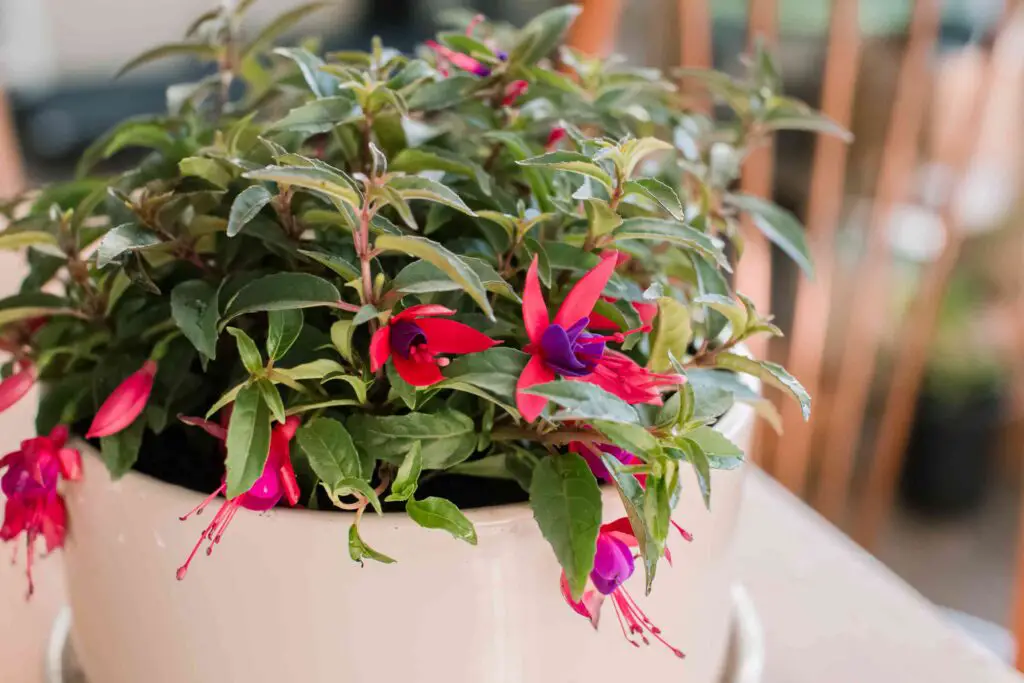
Fuchsia is a top choice for hummingbirds, thanks to its bright, tubular flowers filled with nectar. The cascading blooms make it perfect for hanging baskets or decorative pots, adding a splash of color to any garden or patio. These plants are especially attractive to hummingbirds, who are drawn to the vibrant hues and sweet nectar.
Care Tip:
- Keep the soil moist, but not soggy, as Fuchsia prefers consistently damp conditions.
- Place the plant in partial shade to protect it from harsh midday sun, which can scorch its delicate flowers.
- Ensure good drainage in your pot to prevent root rot.
- During hot weather, increase humidity by misting the plant occasionally.
- Fertilize with a balanced, water-soluble fertilizer during the growing season to encourage abundant blooms.
- Prune back dead or damaged stems to promote healthy growth and shape the plant.
- If grown in colder climates, bring Fuchsia indoors during winter to protect it from frost.
Fuchsia’s beautiful, nectar-rich flowers make it a prime selection in 12 Potted Plants That Attract Hummingbirds, providing both visual appeal and a steady food source for these tiny winged visitors.
2. Salvia (Salvia spp.)

This perennial favorite is known for its spike-like flowers and brilliant shades of red, pink, and purple. Salvia’s flowers are perfect for the long beaks of hummingbirds, who can easily access the nectar they crave. Its bold, colorful blooms not only attract hummingbirds but also add striking beauty to any garden or patio.
Care Tip:
- Salvia thrives in well-drained soil, so be sure to plant it in a pot with drainage holes to prevent waterlogging.
- For maximum blooming, place the plant in a spot that receives full sun, as Salvia needs plenty of light to reach its full potential.
- Water the plant regularly, but allow the soil to dry out between waterings to avoid root rot.
- Prune spent flowers regularly to encourage new growth and prolong the blooming period.
- Fertilize with a balanced fertilizer to support robust growth, especially during the growing season.
- If growing in containers, be sure to repot as needed to provide ample space for root growth.
- In colder climates, Salvia may need to be brought indoors for the winter or treated as an annual.
Salvia’s vibrant flowers and hummingbird-friendly design make it a standout in 12 Potted Plants That Attract Hummingbirds, offering both aesthetic beauty and a steady nectar supply for these tiny pollinators.
3. Trumpet Vine (Campsis radicans)

Though typically grown as a climbing vine, the trumpet vine can be cultivated in a large pot. Its vivid orange or red trumpet-shaped flowers are irresistible to hummingbirds, making it an excellent addition to any garden or patio. These striking flowers not only draw in hummingbirds but also create a bold visual display.
Care Tip:
- Use sturdy support in the pot, such as a trellis or stake, to guide the vine’s growth as it can become quite heavy.
- Ensure the plant receives plenty of sunlight; trumpet vines thrive in full sun for the best blooms.
- Water regularly but allow the soil to dry out slightly between waterings to prevent root rot.
- Fertilize in early spring to promote vigorous growth and flowering throughout the season.
- Prune the vine in late winter or early spring to control its size and encourage new growth.
- Provide a large pot with good drainage to support the vigorous root system.
- In colder climates, bring the plant indoors or treat it as an annual during the winter months.
4. Begonia (Begonia spp.)
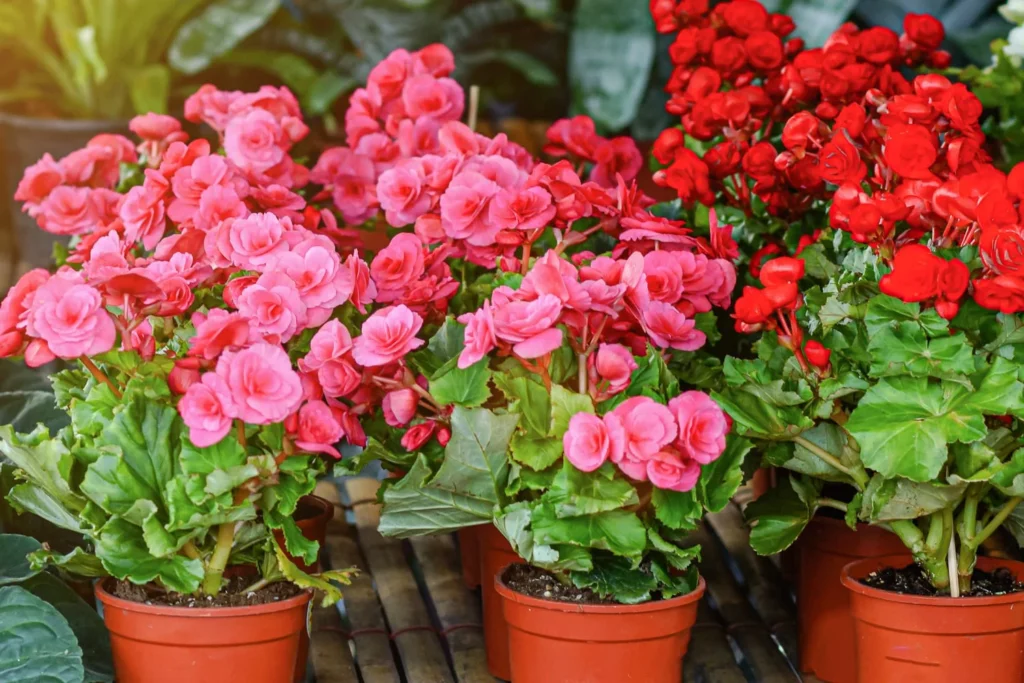
Begonias are a fantastic option for gardeners with limited outdoor space. Their bright, colorful flowers attract hummingbirds while adding charm to patios, decks, or windowsills. These plants come in a variety of shapes and colors, making them an excellent choice for both indoor and outdoor environments.
Care Tip:
- Use a well-draining potting mix to ensure the roots don’t become waterlogged.
- Provide indirect light, as direct sunlight can scorch the delicate leaves of the Begonia.
- Keep the soil consistently moist, but not soggy, to maintain healthy growth.
- Fertilize monthly with a balanced liquid fertilizer during the growing season to encourage abundant blooms.
- Remove dead or damaged leaves regularly to keep the plant looking neat and promote airflow.
- In colder climates, bring Begonias indoors before the first frost to protect them from the cold.
5. Coral Honeysuckle (Lonicera sempervirens)
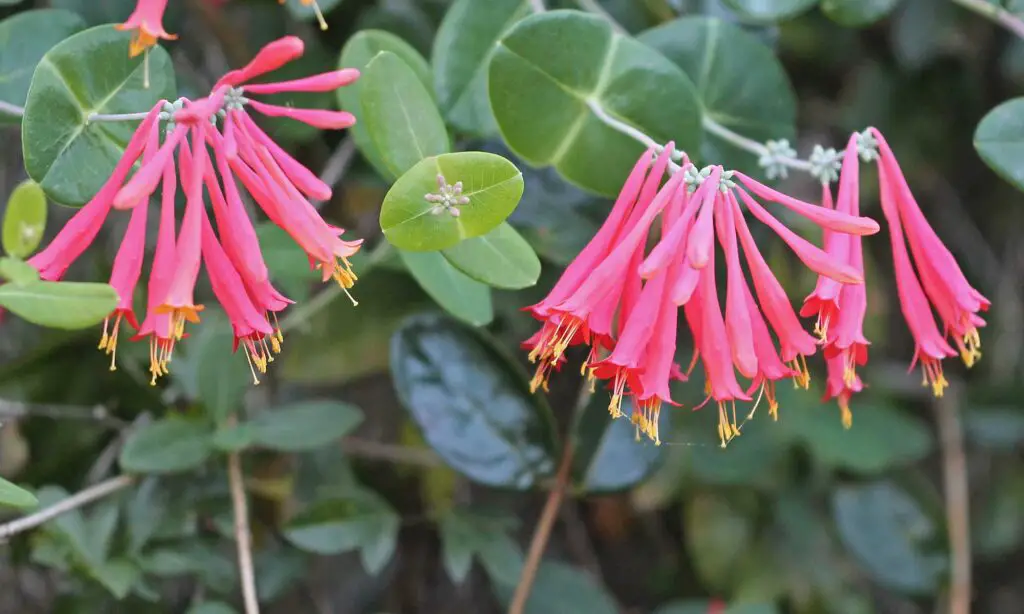
For a fragrant addition to your space, try coral honeysuckle. It produces clusters of tubular red flowers that are a proven favorite of hummingbirds. The sweet scent and vibrant color of its blooms will attract these beautiful birds while adding a delightful fragrance to your garden or patio.
Care Tip:
- This plant prefers sunny spots, so make sure it receives plenty of direct sunlight for optimal growth and blooming.
- Keep the soil moist but well-drained to prevent root rot.
- Prune the plant in late winter or early spring to maintain its shape and encourage vigorous flowering.
- Fertilize with a balanced fertilizer during the growing season to promote abundant blooms.
- Coral honeysuckle is a vigorous grower, so provide support like a trellis or fence to guide its climbing nature.
- In colder climates, consider bringing it indoors during the winter or treating it as a perennial.
Related Topics:
6. Lantana (Lantana camara)
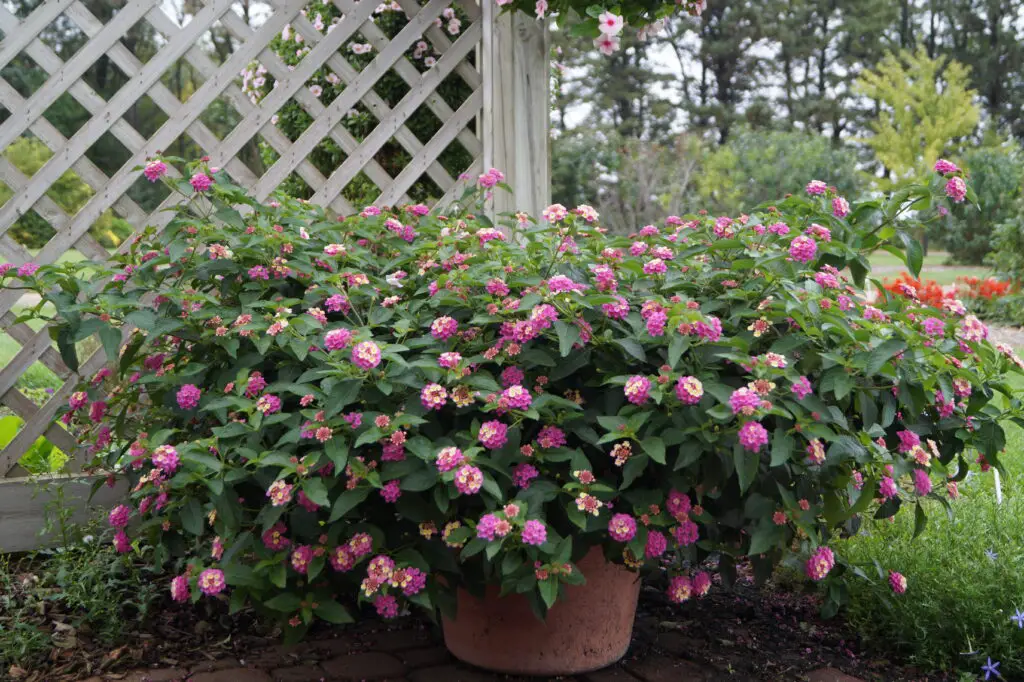
Known for its clusters of tiny, colorful flowers, lantana is a magnet for hummingbirds. Its vibrant blooms, which come in shades of red, yellow, orange, and purple, provide a feast for these tiny creatures. Lantanas are perfect for adding a pop of color to your garden or container and are a reliable choice to attract hummingbirds throughout the growing season.
Care Tip:
- Lantanas thrive in full sun, so plant them in a spot that receives at least 6 hours of sunlight each day.
- Water sparingly to avoid overwatering, as these plants prefer slightly dry conditions between waterings.
- Deadhead spent blooms regularly to encourage more flowers and a neat appearance.
- Fertilize with a balanced fertilizer once a month during the growing season to support continuous flowering.
- Ensure the soil has good drainage to prevent root rot, as lantanas do not like soggy soil.
- In colder climates, lantanas can be grown as annuals or brought indoors during the winter months.
7. Petunia (Petunia spp.)
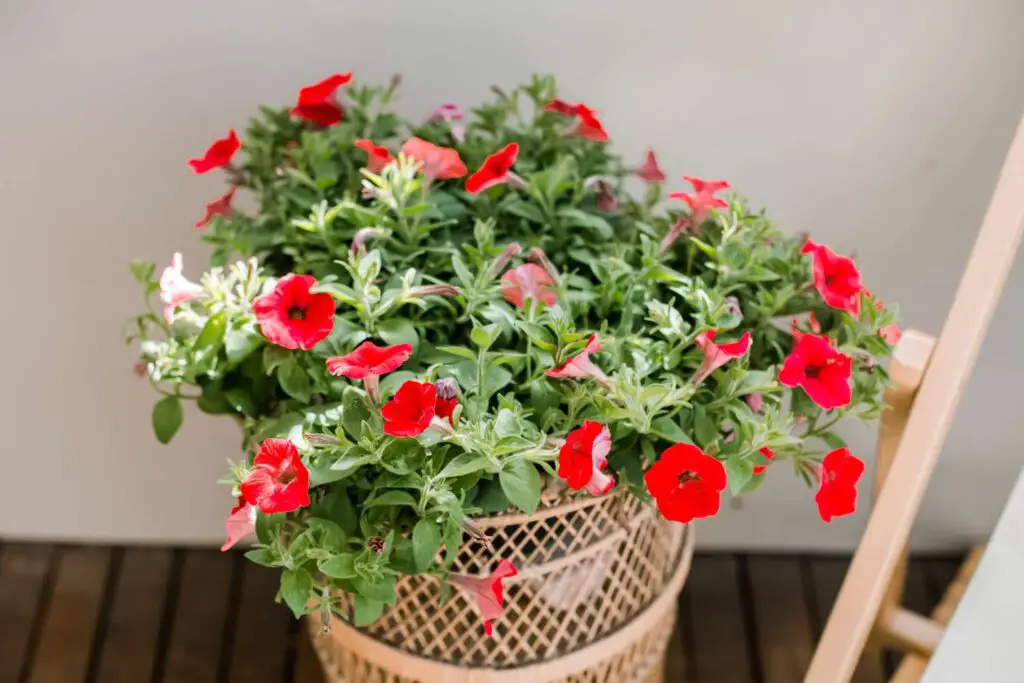
A classic favorite, petunias are known for their trumpet-shaped flowers and bold colors. These plants are easy to grow and highly attractive to hummingbirds, making them a popular choice for gardeners looking to add vibrant, hummingbird-friendly blooms. Petunias come in a range of colors, from deep purples to soft pinks, adding beauty and charm to any garden or pot.
Care Tip:
- Keep petunias in a sunny spot, as they thrive in full sunlight and require at least 6 hours of direct light each day for optimal growth.
- Deadhead them regularly by removing spent blooms to encourage new flowers and maintain a tidy appearance.
- Water consistently but ensure the soil drains well to avoid overwatering.
- Fertilize with a balanced fertilizer every 2-3 weeks during the growing season to promote vibrant, healthy blooms.
- Petunias benefit from occasional pruning to maintain shape and vigor.
- In colder climates, treat petunias as annuals or bring them indoors to protect from frost.
8. Cuphea (Cuphea ignea)
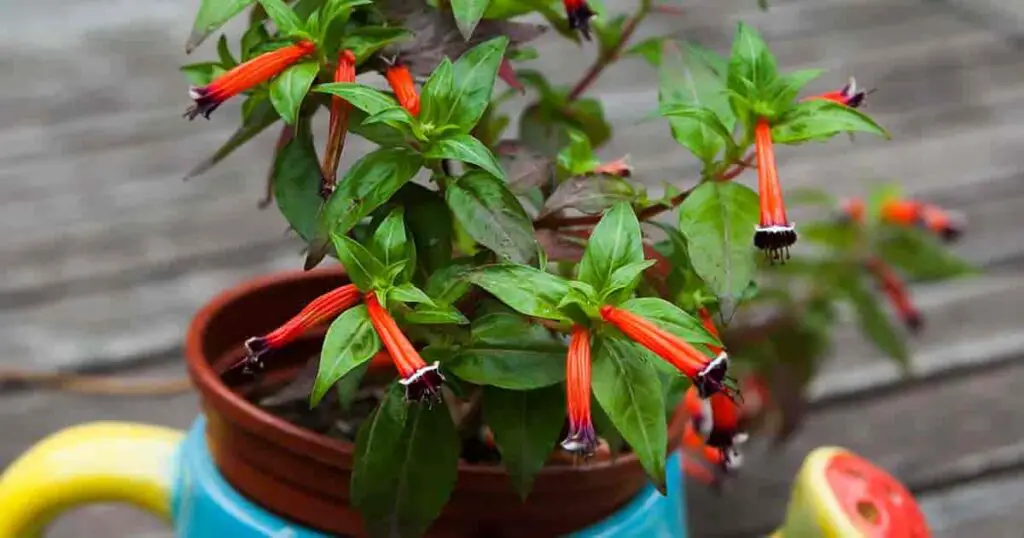
Also known as the cigar plant, cuphea produces small tubular flowers in fiery shades of orange, red, and purple, making it an irresistible option for hummingbirds. These vibrant blooms not only add a pop of color to your garden but also provide a steady nectar source for these tiny, energetic creatures.
Care Tip:
- Ensure that the plant gets at least 6 hours of sunlight a day for optimal growth and flowering.
- Water sparingly, as cuphea prefers slightly dry conditions between waterings.
- Deadhead spent flowers regularly to encourage new blooms and keep the plant looking tidy.
- Provide well-drained soil to prevent waterlogging and root rot.
- Fertilize monthly with a balanced fertilizer to support continuous flowering throughout the season.
- Cuphea can be grown as a perennial in warmer climates, or treated as an annual in colder regions.
9. Snapdragon (Antirrhinum majus)
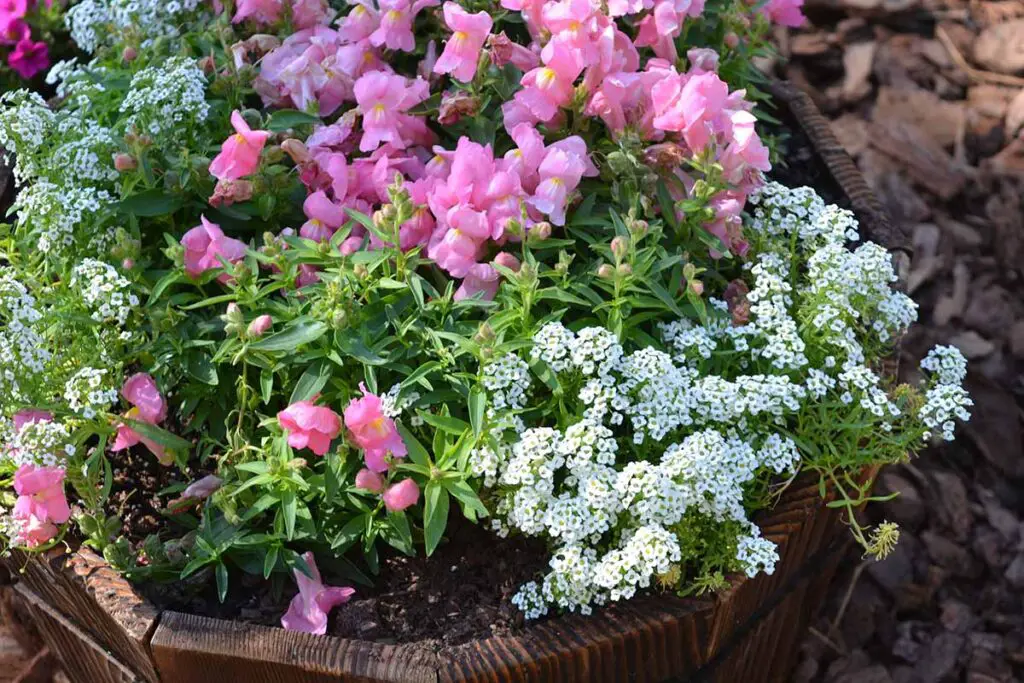
Snapdragons are notable for their tall blooming stalks and tubular flowers, making them another favorite for hummingbirds. With their wide range of colors, from soft pastels to bold reds and yellows, snapdragons provide both beauty and a reliable nectar source that attracts hummingbirds throughout the growing season.
Care Tip:
- Use well-drained soil to prevent waterlogging, as snapdragons do not thrive in overly damp conditions.
- Place the pot in an area where it will receive ample morning sunlight, as snapdragons prefer cooler temperatures and can tolerate full sun in the early hours.
- Water regularly, but allow the soil to dry slightly between waterings to avoid root rot.
- Deadhead spent blooms to encourage more flowers and maintain a neat appearance.
- Fertilize every 4-6 weeks with a balanced fertilizer to promote strong growth and vibrant blooms.
- Snapdragons can be grown as annuals in cooler climates or treated as perennials in warmer zones.
10. Zinnia (Zinnia elegans)
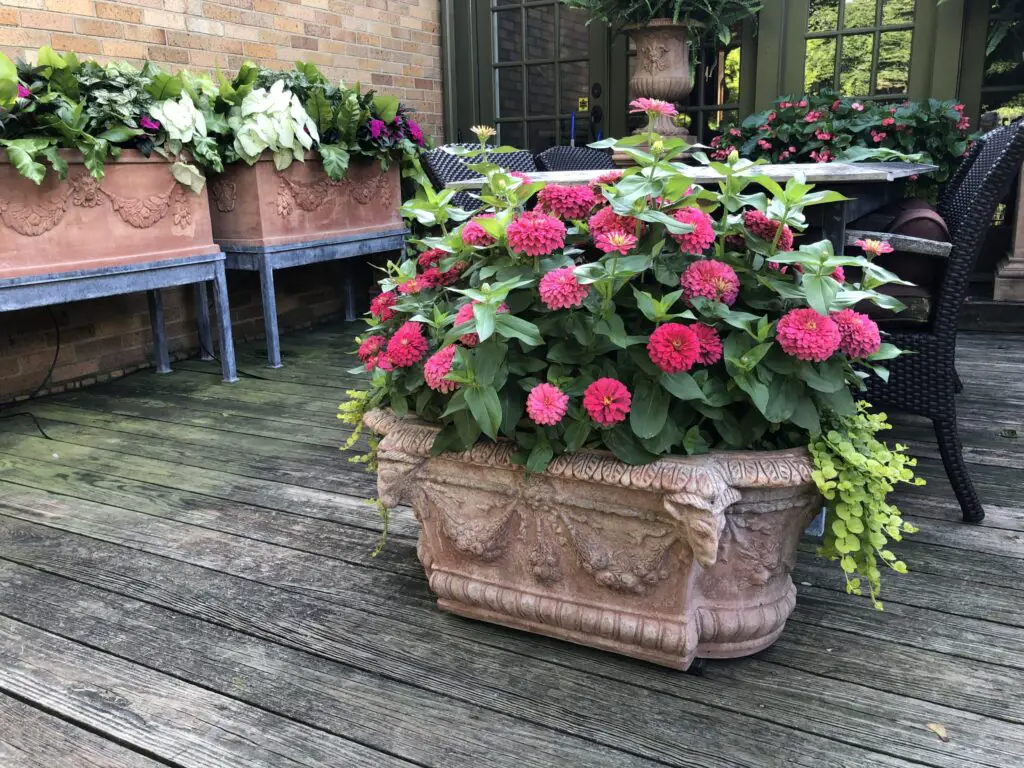
Zinnias are low-maintenance garden staples with bright and cheerful blooms that can draw hummingbirds, butterflies, and bees. Their vibrant colors and long-lasting flowers make them a perfect addition to any garden, and they are particularly effective at attracting hummingbirds with their tubular shapes and nectar-rich blooms.
Care Tip:
- Plant zinnias in a sunny location, as they thrive in full sunlight and require at least 6 hours of sun each day for optimal blooming.
- Ensure consistent watering to keep the soil moist, but avoid overwatering, as zinnias prefer well-drained soil.
- Deadhead spent blooms regularly to encourage more flowers and prolong the blooming period.
- Fertilize with a balanced, water-soluble fertilizer once a month during the growing season for vibrant and healthy blooms.
- Zinnias are annuals in most climates, so be sure to replant each year to enjoy their bright colors.
11. Hibiscus (Hibiscus rosa-sinensis)
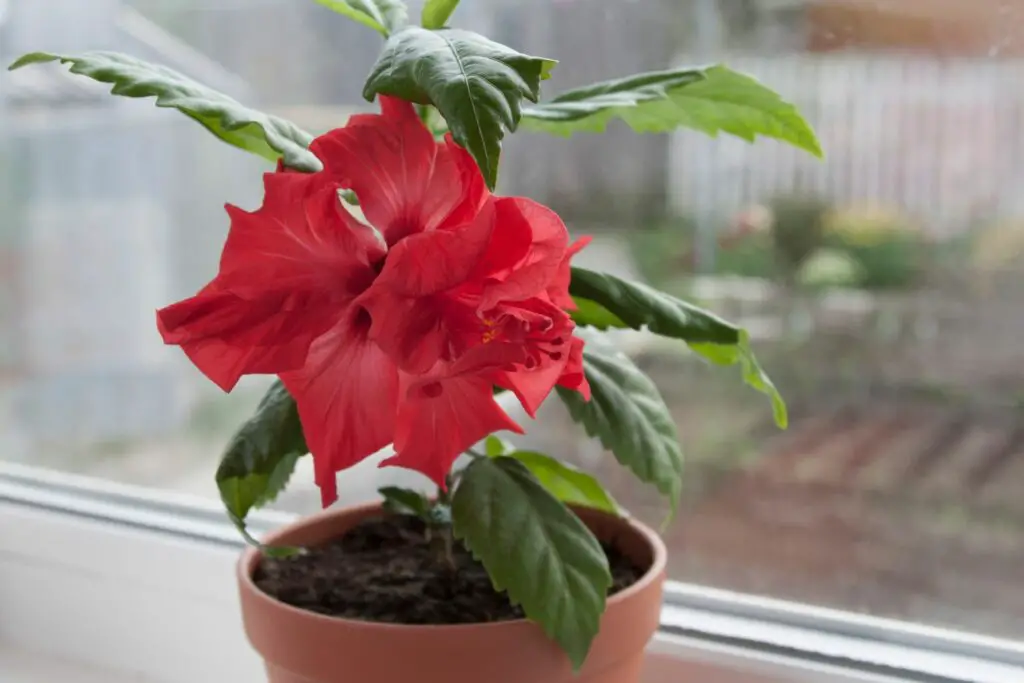
Hibiscus plants produce large, stunning flowers that hummingbirds absolutely love. The bold, trumpet-shaped blossoms come in a variety of colors, including red, pink, and orange, making them a vibrant addition to any garden or balcony. Not only do hibiscus flowers attract hummingbirds, but they also help create a tropical, exotic atmosphere wherever they’re planted.
Care Tip:
- Place the plant in full sun to ensure the blooms stay vibrant and abundant, as hibiscus needs at least 6 hours of direct sunlight per day.
- Water the plant regularly to keep the soil moist, but avoid overwatering, as hibiscus plants do not like soggy roots.
- Fertilize with a balanced, slow-release fertilizer during the growing season to encourage strong growth and prolific blooms.
- Prune the plant periodically to maintain its shape and promote new growth.
- If grown in colder climates, bring the hibiscus indoors during the winter to protect it from frost.
12. Red Hot Poker (Kniphofia spp.)
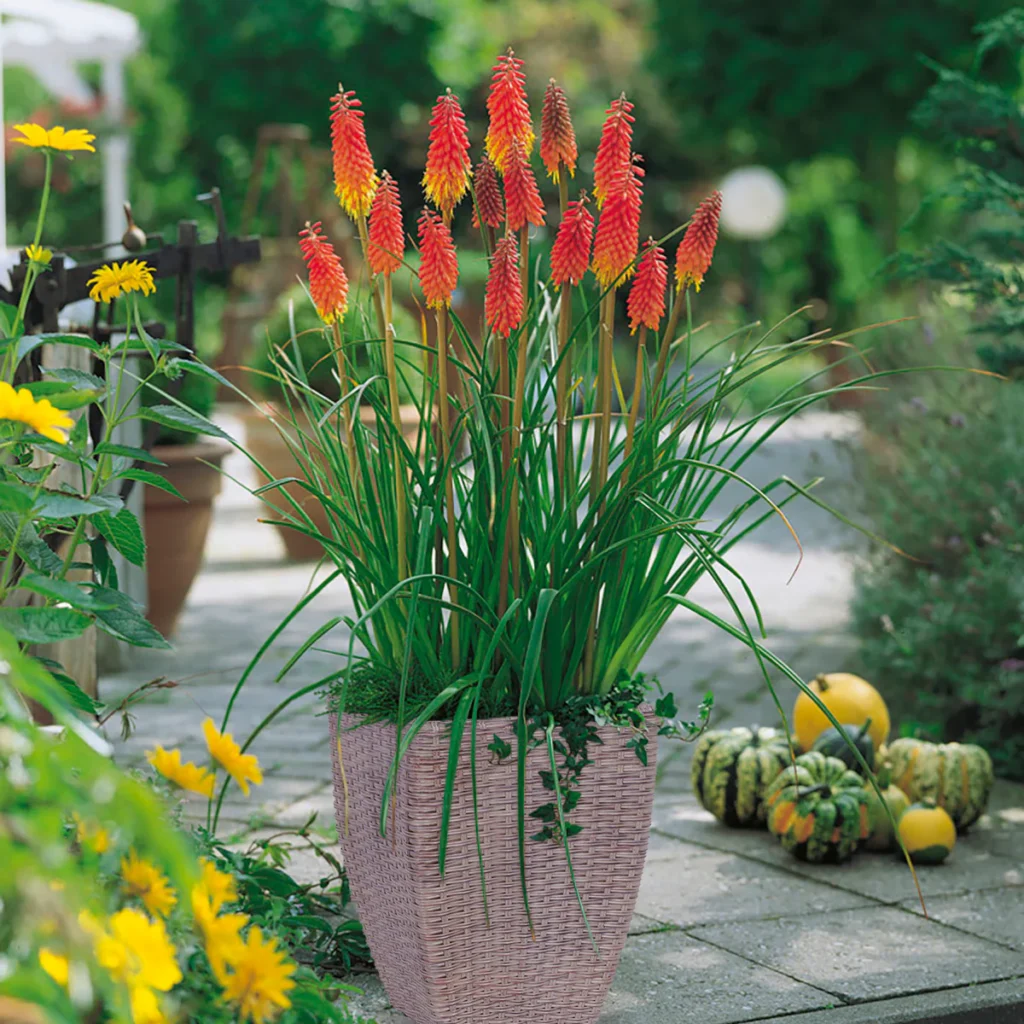
This striking plant produces tall, torch-like flowers in shades of red and orange. The vibrant, tubular blooms are a favorite of hummingbirds, who are drawn to the nectar-rich flowers. Red hot pokers add a dramatic flair to your garden or patio with their unique flower spikes, making them a great choice for attracting these tiny winged visitors.
Care Tip:
- Red hot pokers thrive in full sunlight, so plant them in a location where they will receive at least 6 hours of direct sun per day.
- Ensure the soil is well-draining to prevent waterlogging, which can lead to root rot.
- Water regularly, but allow the soil to dry out slightly between waterings to keep the roots healthy.
- Fertilize with a balanced fertilizer to promote strong growth and vibrant blooms during the growing season.
- Deadhead spent flowers to encourage new blooms and maintain a tidy appearance.
- In colder climates, consider bringing the plant indoors or providing extra winter protection to keep it thriving.
Additional Tips for Attracting and Supporting Hummingbirds:
- Place Feeders Nearby: Adding a hummingbird feeder filled with nectar near your potted plants can help reinforce their presence. Position it close to the 12 Potted Plants That Attract Hummingbirds to create an ideal feeding station and encourage more visits.
- Spacing Matters: Leave enough space between pots to give hummingbirds room to maneuver as they move between flowers. This will also allow them to feed without feeling crowded, maximizing the appeal of your 12 Potted Plants That Attract Hummingbirds.
- Avoid Pesticides: Hummingbirds feed on insects, and using pesticides may harm them or their food sources. Protect both your plants and these delicate birds by opting for natural pest control methods.
- Provide Perches: Add small perches near pots, giving hummingbirds a place to rest between feedings. Placing perches near your 12 Potted Plants That Attract Hummingbirds will provide hummingbirds a safe spot to rest, making it easier for them to take breaks during their busy feeding routines.
- Choose Native Plants: Incorporate native plants in your collection of 12 Potted Plants That Attract Hummingbirds. Native flowers typically produce more nectar and are better suited for local hummingbird species.
- Water Source: Adding a shallow water dish or birdbath near your plants will provide a much-needed drink for hummingbirds during the warmer months. Make sure the water is fresh and shallow to avoid drowning risks.
- Maintain Healthy Plants: Healthy, thriving plants are more likely to produce vibrant, nectar-rich blooms that attract hummingbirds. Regular care and attention to your 12 Potted Plants That Attract Hummingbirds will ensure they remain a magnet for these tiny visitors.
By introducing these potted plants into your indoor or outdoor space, you’ll not only create a haven for hummingbirds but also enjoy the beauty and color they bring. Whether you’re a gardener, bird watcher, or nature enthusiast, these plants provide a harmonious blend of nature and human creativity. The vibrant blooms of the 12 Potted Plants That Attract Hummingbirds will transform your space into a vibrant ecosystem that supports both plant life and pollinators.
Start planting today, and watch as your space becomes alive with the flutter of hummingbird wings. With the right care and attention, your garden or home will become a thriving sanctuary for these magical birds, offering you endless opportunities to connect with nature and experience the joy they bring.
FAQs:
What are the best potted plants to attract hummingbirds?
Some of the best potted plants that attract hummingbirds include Fuchsia, Salvia, Trumpet Vine, and Zinnia. These plants have brightly colored, tubular flowers that produce nectar, which is perfect for feeding hummingbirds. Other great options include Hibiscus, Lantana, and Cuphea, all of which provide abundant nectar and vibrant blooms that draw in these fascinating creatures.
How do I care for potted plants that attract hummingbirds?
To care for your 12 Potted Plants That Attract Hummingbirds, ensure they receive adequate sunlight (typically at least 6 hours a day), water them regularly without overwatering, and use well-draining soil to prevent root rot. Deadheading spent flowers and regular fertilization will promote continuous blooming. Additionally, avoid pesticides that could harm hummingbirds or their food sources.
Can I grow these plants indoors to attract hummingbirds?
Yes, many of the 12 Potted Plants That Attract Hummingbirds can be grown indoors, especially in sunny spots like windowsills or near glass doors. Plants such as Fuchsia, Begonias, and Salvia thrive in indoor conditions with indirect light. However, keep in mind that while hummingbirds are drawn to these plants, they typically need outdoor space to thrive. Consider adding a hummingbird feeder nearby to increase the chances of attracting them indoors.
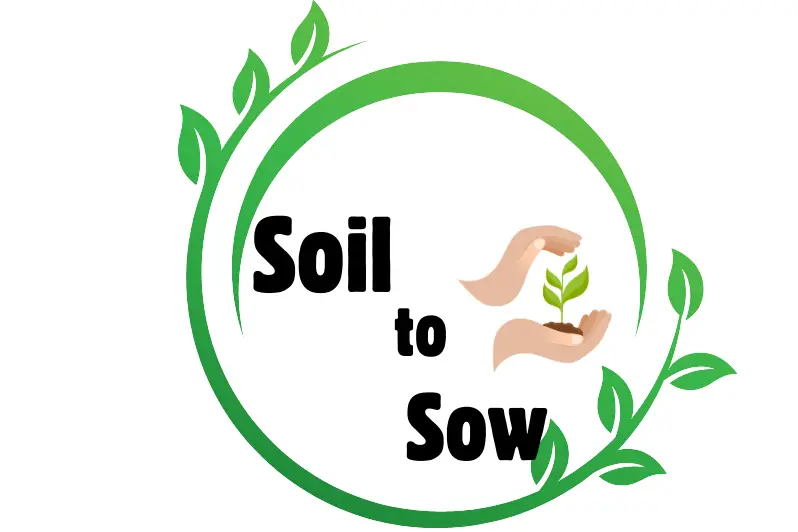

2 thoughts on “12 Potted Plants That Attract Hummingbirds: Bring Beauty and Buzz!”